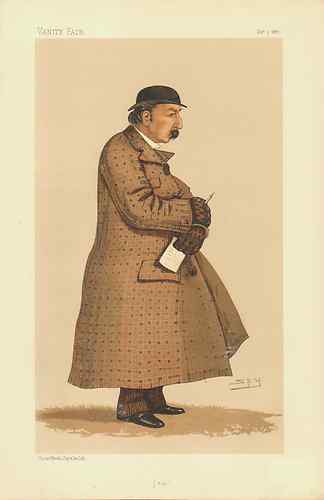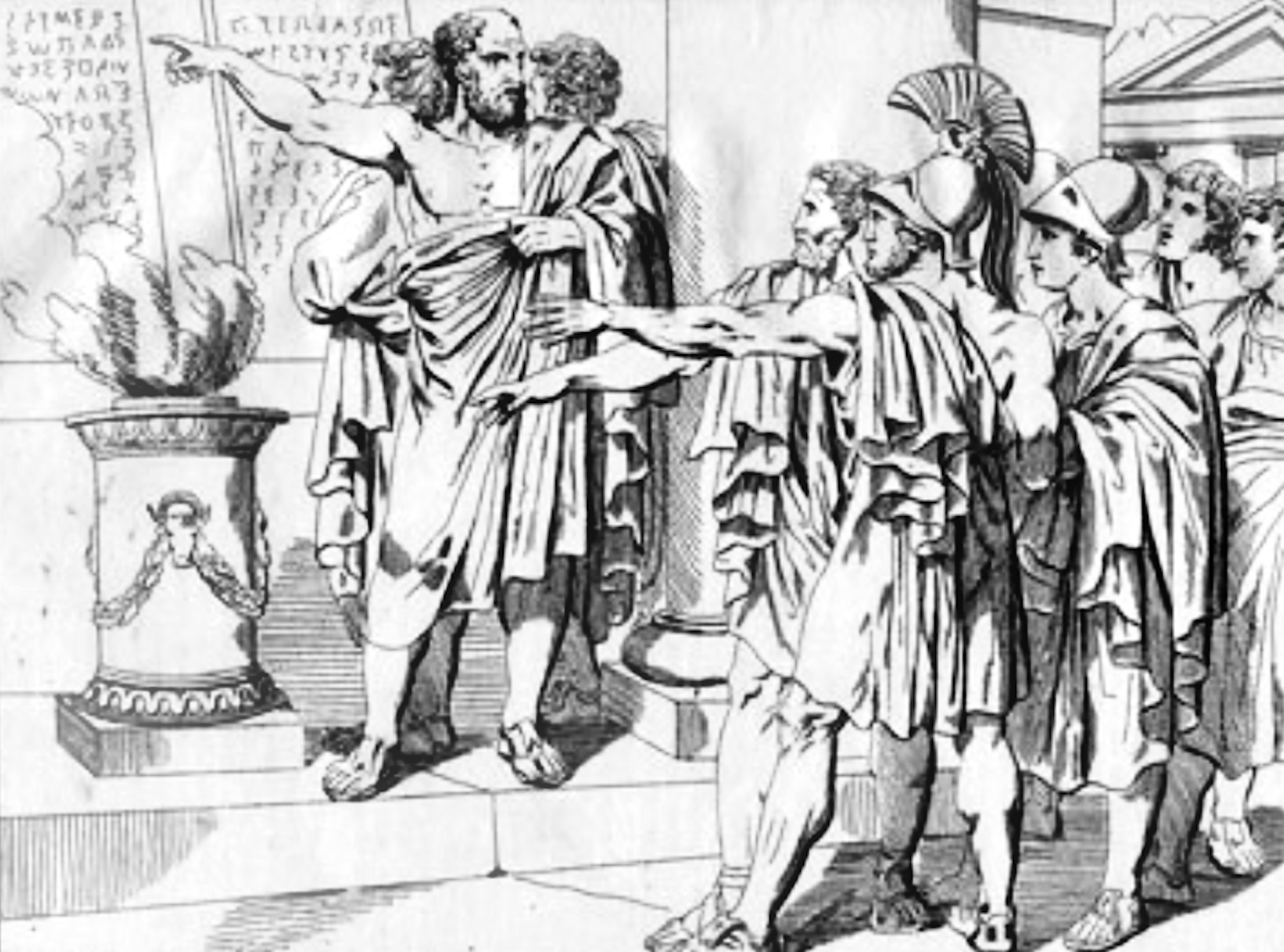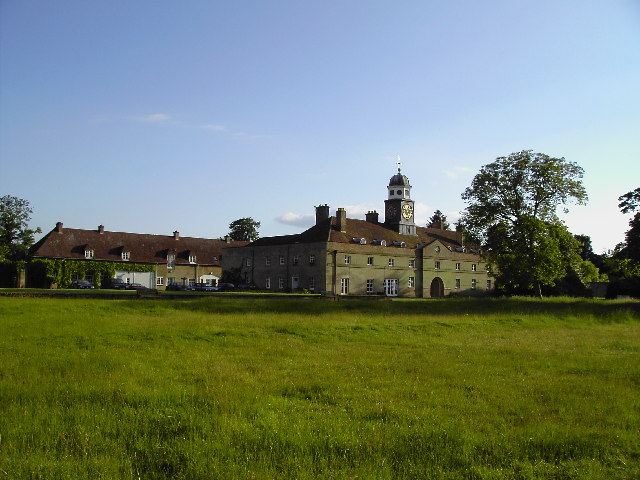|
Kilwarlin
Kilwarlin (1884 – 1900) was a British Thoroughbred racehorse and sire. The detail of his ownership were complicated and led to complaints being lodged with the Jockey Club. He showed considerable promise as a juvenile in 1886 when he won his first two races before being upset at odds of 1/20 in the Bretby Stakes. In the following year he ran unplaced in the Great Jubilee Stakes and then ran three times at Royal Ascot, winning a Biennial Stakes and finishing second in both the Queen's Stand Stakes and the Rous Memorial Stakes (to Ormonde). In autumn he started favourite for the St Leger and won a controversial race despite being left more than 100 yards behind his rivals at the start. After his retirement from racing he became a successful breeding stallion. Background Kilwarlin was a brown horse bred at the Curragh, County Kildare in Ireland (then part of the United Kingdom) by J. Connolly. During his racing career he was initially owned by Captain Machell who was descri ... [...More Info...] [...Related Items...] OR: [Wikipedia] [Google] [Baidu] |
Ormonde (horse)
Ormonde (1883–1904) was an undefeated English Thoroughbred racehorse who won the 1886 Triple Crown of Thoroughbred Racing, English Triple Crown and was labelled the 'horse of the century' at the time. He also won the St. James's Palace Stakes, Champion Stakes and the Hardwicke Stakes twice. Ormonde was trained at Kingsclere by John Porter (horseman), John Porter for the Hugh Grosvenor, 1st Duke of Westminster, 1st Duke of Westminster. His regular jockeys were Fred Archer (jockey), Fred Archer and Tom Cannon, Sr., Tom Cannon. After retiring from racing he suffered fertility problems, but still sired Orme (horse), Orme, who won the Eclipse Stakes twice. Background Ormonde was a bay colt (horse), colt, bred by Hugh Grosvenor, 1st Duke of Westminster and foaled in 1883 at Eaton Stud in Cheshire. Ormonde's sire was Epsom Derby, The Derby and Champion Stakes winner Bend Or, also bred by the Duke. Bend Or was a successful stallion, his progeny included Kendal (horse), Kendal, Ossory ( ... [...More Info...] [...Related Items...] OR: [Wikipedia] [Google] [Baidu] |
James Octavius Machell
Captain James Octavius Machell (1837–1902) was an influential figure in British horse racing during the final decades of the 19th century. He was a respected judge of horses and an astute and highly successful gambler. During a career that lasted almost forty years he managed and trained eleven English classic winners and was himself the owner of a record three Grand National winners. Early life James Machell was born at Etton Rectory near Beverley on 5 December 1837, the youngest child of the Reverend Robert and Eliza Machell. He attended Rossall School near Fleetwood Lancashire from 1846 to 1854. In 1857 he joined the army and was posted to India, becoming involved with the suppression of the Indian mutiny. His regiment returned home to be quartered on The Curragh in Ireland where Machell spent the next seven years. During this period he participated in horse racing and in 1862 became the leading owner in Ireland. The same year he was promoted from Lieutenant to Capt ... [...More Info...] [...Related Items...] OR: [Wikipedia] [Google] [Baidu] |
George Brydges Harley Dennett Rodney, 7th Baron Rodney
George Brydges Harley Dennett Rodney, 7th Baron Rodney (28 February 1857 - 29 December 1909) was a British Army officer notable for his service in the Egyptian and Nile campaigns of the 1880s. He succeeded his father to the Rodney Barony in 1864 and was succeeded by his son George Bridges Harley Guest Rodney (1891-1973). Life He was a captain in the 1st Life Guards from 1886 to 1888, serving with them in the Egyptian and Nile campaigns before moving to the Reserve of Officers at the same rank in 1889. He exhausted his considerable inherited fortune on bloodstock and gambling. In 1887, his first season as a racehorse owner, he won the St Leger Stakes with Kilwarlin and the Cesarewitch Handicap with Humewood. He attended the Devonshire House Ball of 1897 as King Arthur. He also held the rank of captain in the Shropshire Imperial Yeomanry from 1890 to 1897 before becoming lieutenant colonel of the 16th Middlesex (London Irish) Rifle Volunteers in 1898. He was the last of his ... [...More Info...] [...Related Items...] OR: [Wikipedia] [Google] [Baidu] |
St Leger
The St Leger Stakes is a Group 1 flat horse race in Great Britain open to three-year-old thoroughbred colts and fillies. It is run at Doncaster over a distance of 1 mile, 6 furlongs and 115 yards (2,921 metres), and it is scheduled to take place each year in September. Established in 1776, the St Leger is the oldest of Britain's five Classics. It is the last of the five to be run each year, and its distance is longer than any of the other four. The St Leger is the final leg of the English Triple Crown, which begins with the 2000 Guineas and continues with the Derby. It also completes the Fillies' Triple Crown, following on from the 1000 Guineas and the Oaks. The St Leger has rarely featured Triple Crown contenders in recent decades, with the only one in recent years being the 2012 2,000 Guineas and Derby winner Camelot, who finished second in the St Leger. History Early years The even ... [...More Info...] [...Related Items...] OR: [Wikipedia] [Google] [Baidu] |
Challenge Stakes (Great Britain)
The Challenge Stakes is a Group 2 flat horse race in Great Britain open to horses aged three years or older. It is run on the Rowley Mile at Newmarket over a distance of 7 furlongs (1,408 metres), and it is scheduled to take place each year in October. History The event was established in 1878, and the inaugural edition was titled the First Great Challenge Stakes. It was originally contested over six furlongs and open to horses aged two or older. The present system of race grading was introduced in 1971, and for a period the Challenge Stakes held Group 3 status. It was extended to seven furlongs in 1977, and closed to two-year-olds in 1985. It was promoted to Group 2 level in 1987. The race was formerly staged during Newmarket's Champions' Day meeting in mid-October. It became part of a new fixture called Future Champions Day in 2011. Records Most successful horse (2 wins): * Energy – ''1882, 1884'' * Mephisto – ''1886, 189 ... [...More Info...] [...Related Items...] OR: [Wikipedia] [Google] [Baidu] |
Reve D'Or
Reve d'Or (1884 – after 1904) was a British Thoroughbred racehorse and broodmare who won two British Classic Races in 1887. She ran nine times as a juvenile in 1886, winning three races including an upset victory in the Dewhurst Plate in October. In the following year she won nine races including the 1000 Guineas, Oaks Stakes, Sussex Stakes, York Queen's Plate, Yorkshire Oaks, Great Foal Stakes and Newmarket Oaks. She remained in training until the age of seven, winning the Jockey Club Cup in 1888 and the City and Suburban Handicap in 1890. She had limited success as a broodmare in France. Background Reve d'Or was a chestnut mare bred and owned by Henry Somerset, 8th Duke of Beaufort. The filly was sent into training with Alec Taylor Sr. at Manton, Wiltshire, Manton in Wiltshire. Her sire, Hampton was an excellent stayer who won both the Goodwood Cup and the Doncaster Cup. Hampton was Leading sire in Great Britain and Ireland, Champion sire in 1887 and sired, in addition t ... [...More Info...] [...Related Items...] OR: [Wikipedia] [Google] [Baidu] |
Bendigo (horse)
Bendigo (foaled 1880) was a British Thoroughbred racehorse. He was owned by H. T. Barclay and trained by Charles Jousiffe. He won the first running of the Eclipse Stakes, the most valuable race in Britain. He also won the Champion Stakes and was noted for his performances in the top handicap races. Breeding Bendigo was sired by Irish Derby winner Ben Battle. Ben Battle was a son of Doncaster Cup winner Rataplan. Bendigo's dam was Hasty Girl, a daughter of Lord Gough. Hasty Girl also foaled 1887 St. Leger Stakes winner Kilwarlin. Racing career 1883: Three-year-old season Bendigo did not run as a two-year-old. On 9 October 1883 he ran in the Cesarewitch Stakes at the Newmarket Houghton meeting. Carrying 6 st 7 lb he started a 40/1 outsider in the field of 22. He finished in about sixth place, behind winner Don Juan. Two weeks later he ran in the Cambridgeshire Stakes. He again started as an outsider, this time starting at 50/1. Carrying 6 st 10 lb he won ... [...More Info...] [...Related Items...] OR: [Wikipedia] [Google] [Baidu] |
Solon (horse)
Solon ( grc-gre, Σόλων; BC) was an Athenian statesman, constitutional lawmaker and poet. He is remembered particularly for his efforts to legislate against political, economic and moral decline in Archaic Athens.Aristotle ''Politics'' 1273b 35–1274a 21 His reforms failed in the short term, yet Solon is credited with having laid the foundations for Athenian democracy.Stanton, G. R. ''Athenian Politics c. 800–500 BC: A Sourcebook'', Routledge, London (1990), p. 76.E. Harris, ''A New Solution to the Riddle of the Seisachtheia'', in ''The Development of the Polis in Archaic Greece'', eds. L. Mitchell and P. Rhodes (Routledge 1997) 103 His constitutional reform also succeeded in overturning most laws established by Draco. Modern knowledge of Solon is limited by the fact that his works only survive in fragments and appear to feature interpolations by later authors and by the general paucity of documentary and archaeological evidence covering Athens in the early 6th cen ... [...More Info...] [...Related Items...] OR: [Wikipedia] [Google] [Baidu] |
Stockton Racecourse
Stockton Racecourse (September 1855 - 16 June 1981), also known as Teesside Park, was a British horse racing venue near Stockton-on-Tees in the north east of England, once considered "the finest in the north". Although named "Stockton Racecourse" there has never been a racecourse within Stockton-on-Tees, these courses were actually located across the River Tees in the North Riding of Yorkshire". Pre 1830s an alteration called the Mandale Cut of the river Tees was made. This caused the land of the racecourse north of the Tees (County Durham) to therefore became North Yorkshire. Due to the memory of the land being north of the Tees when the course was named it became Stockton Racecourse. Through the years, racing took place at three sites in Stockton. The first of these was The Carrs, where racing first took place in 1724. Racing was then discontinued in Stockton for many years, before being revived in September 1855 at Mandale Marshes, situated on a loop in the River Tees. ... [...More Info...] [...Related Items...] OR: [Wikipedia] [Google] [Baidu] |
Godolphin Arabian
The Godolphin Arabian (–1753), also known as the Godolphin Barb, was an Arabian horse who was one of three stallions that founded the modern Thoroughbred (the others were the Darley Arabian and the Byerley Turk). He was named after his best-known owner, Francis Godolphin, 2nd Earl of Godolphin. Origins The Godolphin Arabian was foaled about 1724 in Yemen and moved several times before reaching England. At some early age, he was exported, probably via Syria, to the stud of the bey of Tunis. From there he was given to Louis XV of France in 1730. It is believed he was a present from monarch to monarch. Not valued by his new French owner, it is believed he was used as a carthorse. The horse was then imported from France by Edward Coke and sent to his stud at Longford Hall, Derbyshire, where he remained until the death of his owner in 1733. He was bequeathed to Roger Williams, "proprietor of the St. James's Coffee House", who inherited Coke's stallions. He was bought by the 2nd ... [...More Info...] [...Related Items...] OR: [Wikipedia] [Google] [Baidu] |
Eclipse Stakes
The Eclipse Stakes is a Group races, Group 1 Flat racing, flat Horse racing, horse race in Great Britain open to horses aged three years or older. It is run at Sandown Park Racecourse, Sandown Park over a distance of 1 mile, 1 furlong and 209 yards (2,002 metres), and it is scheduled to take place each year in early July. History The event is named after Eclipse (horse), Eclipse, a celebrated 18th-century racehorse. It was established in 1886, and the inaugural running was won by Bendigo (horse), Bendigo. At that time, it was Britain's richest ever race. The prize fund of £10,000 was donated by Leopold de Rothschild at the request of General Owen Williams (British Army officer), Owen Williams, a co-founder of Sandown Park. The Eclipse Stakes was contested by high-quality fields from its inception. It was won by Ayrshire, the previous year's Epsom Derby, Derby winner, in 1889. The first three finishers i ... [...More Info...] [...Related Items...] OR: [Wikipedia] [Google] [Baidu] |
Newmarket Racecourse
Newmarket Racecourse is a British Thoroughbred horse racing venue in Newmarket, Suffolk, Newmarket, Suffolk, comprising two individual racecourses: the Rowley Mile and the July Course. Newmarket is often referred to as the headquarters of Horse racing in the United Kingdom, British horseracing and is home to the largest cluster of training yards in the country and many key horse racing organisations, including Tattersalls, the National Horseracing Museum and the National Stud. Newmarket hosts two of the country's five British Classic Races, Classic Races – the 1,000 Guineas and 2,000 Guineas, and numerous other Group races. In total, it hosts 9 of British racing's List of British flat horse races#Group 1, 36 annual Group One, Group 1 races. History Racing in Newmarket was recorded in the time of James VI and I, James I. The racecourse itself was founded in 1636. Around 1665, Charles II of England, Charles II inaugurated the Newmarket Town Plate and in 1671 became the fi ... [...More Info...] [...Related Items...] OR: [Wikipedia] [Google] [Baidu] |





